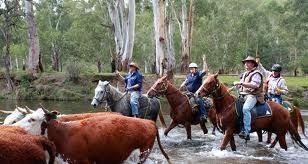Jennifer Scoullar's Blog, page 19
July 13, 2013
Sunday With Mr Wigg
 It is with great pleasure that I welcome Inga Simpson to Pilyara this Sunday. Inga is one of my absolute favourite authors! I’ve had the privilege of working with her as my mentor, and I consider her to be, along with Mark Tredinnick, one of Australia’s foremost nature writers. Just read her wonderful essay Triangulation (it won the 2012 Eric Rolls Nature Writing Prize) and I think you’ll agree with me. Inga’s recent release, Mr Wigg, has enchanted reviewers and readers alike with its unique and beautiful voice. ‘Sure to become an Australian classic,’ says one. ‘Reawakens our sense of what is right and good about the world,‘ says another. But enough of my raving! Time to hear from Inga herself …
It is with great pleasure that I welcome Inga Simpson to Pilyara this Sunday. Inga is one of my absolute favourite authors! I’ve had the privilege of working with her as my mentor, and I consider her to be, along with Mark Tredinnick, one of Australia’s foremost nature writers. Just read her wonderful essay Triangulation (it won the 2012 Eric Rolls Nature Writing Prize) and I think you’ll agree with me. Inga’s recent release, Mr Wigg, has enchanted reviewers and readers alike with its unique and beautiful voice. ‘Sure to become an Australian classic,’ says one. ‘Reawakens our sense of what is right and good about the world,‘ says another. But enough of my raving! Time to hear from Inga herself …
Welcome to Pilyara, Inga. Could you tell us please, about how Mr Wigg came to be published?
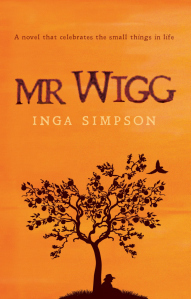 I participated in the 2011 QWC/Hachette Manuscript Development Program, where I received a whole lot of great feedback from the publisher and went away and reworked the novel before resubmitting it. I felt reasonably confident the book would eventually get up but there was a bit of an extended conversation before I felt it was close. I had been expecting the call for a few weeks, forwarding my home phone to my mobile every time I went out … When the call finally came, I was at the train station saying good bye to my partner for a week or so. I saw the number but the train was pulling in – I stressed out and didn’t take the call. Once I had put my partner on the train, the publisher called again. After twice dropping the phone on the floor of the car I managed to answer: CONTRACT!
I participated in the 2011 QWC/Hachette Manuscript Development Program, where I received a whole lot of great feedback from the publisher and went away and reworked the novel before resubmitting it. I felt reasonably confident the book would eventually get up but there was a bit of an extended conversation before I felt it was close. I had been expecting the call for a few weeks, forwarding my home phone to my mobile every time I went out … When the call finally came, I was at the train station saying good bye to my partner for a week or so. I saw the number but the train was pulling in – I stressed out and didn’t take the call. Once I had put my partner on the train, the publisher called again. After twice dropping the phone on the floor of the car I managed to answer: CONTRACT!
What is your novel Mr Wigg about?
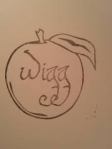 Mr Wigg is about the final year of one man’s life. He lives on what is left of the family farm in rural New South Wales, tending his magnificent orchard, cooking with his grandchildren, and telling them stories. Living alone is becoming more and more tenuous, but he takes on an ambitious project – forging a wrought iron peach tree – which all comes about because of a fairy tale about a Peach King.
Mr Wigg is about the final year of one man’s life. He lives on what is left of the family farm in rural New South Wales, tending his magnificent orchard, cooking with his grandchildren, and telling them stories. Living alone is becoming more and more tenuous, but he takes on an ambitious project – forging a wrought iron peach tree – which all comes about because of a fairy tale about a Peach King.
In a way, it’s also a love story. Although Mrs Wigg has recently passed away, he reminisces about their life together. She was a bit of a character – with a particular fondness for the colour aqua.
What or who inspired the story?
To an extent, my paternal grandfather. He grew magnificent peaches! White ones
especially, which I’ve never tasted the likes of since. Wigg is the family name of one of his French ancestors, which really stuck in my head. When I travelled to rural France and saw the way people live – with their village plots and walled orchards, and so much emphasis on growing and cooking and sharing food – I wondered if my grandfather had been living out that part of his genetic heritage without having ever been to France. A character began to take shape, and I was calling the novel “Mr Wigg” long before I started writing. Mr Wigg took on his own character as the book evolved but some of the details, and Mr Wigg’s stories about the old days, are borrowed from my family.
Are there any parts of it that have special personal significance to you?
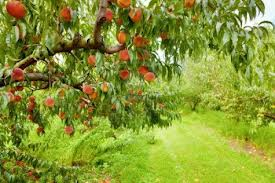 The novel celebrates the spirit of the landscape where I grew up, and the time – the 1970s. A way of life, too, that has largely been lost. Blacksmithing and woodturning were crafts practised in my family and I value the richness of having been raised among those traditions.
The novel celebrates the spirit of the landscape where I grew up, and the time – the 1970s. A way of life, too, that has largely been lost. Blacksmithing and woodturning were crafts practised in my family and I value the richness of having been raised among those traditions.
There is something of my childhood memories of my own grandfather in Mr Wigg, too. An honouring of his orcharding skills and generous approach to life.
What do you see as the major themes in your book?
Change was a big theme for me while writing Mr Wigg. Not just ageing, but the decline of big farming families, the landscape, and rural way of life. Care for the environment, too, and respect for our fellow creatures – living in a connected way within the natural world.
Thank you Inga, for answering my questions about your gorgeous new novel. I absolutely loved it, and can’t wait to read whatever comes next!
Mr Wigg
A novel that celebrates the small, precious things in life by a fresh Australian voice.
It’s the summer of 1971, not far from the stone-fruit capital of New South Wales, where Mr Wigg lives on what is left of his family farm. Mrs Wigg has been gone a few years now and he thinks about her every day. He misses his daughter, too, and wonders when he’ll see her again.
He spends his time working in the orchard, cooking and preserving his produce and, when it s on, watching the cricket. It s a full life. Things are changing though, with Australia and England playing a one-day match, and his new neighbours planting grapes for wine. His son is on at him to move into town but Mr Wigg has his fruit trees and his chooks to look after. His grandchildren visit often: to cook, eat and hear his stories. And there s a special project he has to finish…
Trouble is, it’s a lot of work for an old man with shaking hands, but he’ll give it a go, as he always has …
Now, for the winners of the prize-pack draw announced a few weeks ago! Drum roll please! Brendat39 and Beverley Mayne. I’ll email you shortly for the address to post the prizes. Congratulations, and thank you to everybody who entered the draw.

July 6, 2013
A Spicy Sunday With Kate Belle
Please welcome Kate Belle to Pilyara. Kate is the author of The Yearning, which is rocketing up the charts – and it’s not just because of its intriguing cover! Kate is a very fine writer, friend and member of my talented writing group, The Little Lonsdale Group. And now its over to Kate for an in depth Q&A …
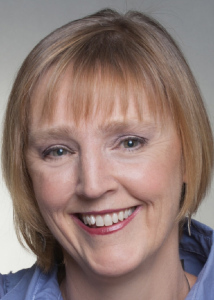 ‘Thanks for having me over here Jen and hello to all your faithful readers.
‘Thanks for having me over here Jen and hello to all your faithful readers.
I’ve taken over a month to get to this post, only because I’ve been writing my second novel and watching with envy as Jen overtakes my word count! Having traversed some of the writing journey with Jen, I’m very excited to see her second novel, Currawong Creek, released. I was planning to share a little post about my hounds because Jen is constantly amused by my hot-to-cold relationship with them, but I might leave that for another time.’
Kate, How did you receive your first offer of publication?
‘The Yearning was written over about 4 years while I worked part time and cared for my pre-school daughter. I attended two consecutive Year of the Novel courses at Writers’ Victoria where I met Jen and a number of other wonderful writers who are published (or soon to be.)
During these courses I ‘grew up’ as a writer and was able to develop The Yearning into a mature enough manuscript to try my luck in the publishing world. My first break came in August 2011 when I attended the Melbourne Romance Writers Australia conference. There I met Sheila Drummond, who agreed to look at The Yearning and rang me immediately after the conference with an offer to represent me.
Sheila started shopping The Yearning around late that year, but it would be another 12 months before she secured an offer for it. In the meantime she managed to get me a contract for two erotic novellas with newly launched Random Romance imprint. At the time I was working in a restructured job in the public service and was pretty miserable. When voluntary redundancies were announced I eagerly put my hand up. I had surgery on my knee in September 2012 and as I lay in bed recovering I received a redundancy offer and a contract for The Yearning on the same day. It seemed like divine coincidence. I crossed my fingers, signed them both, and prepared to start a new life as a full time writer in 2013.’
What is your story about Kate?
 The Yearning is an exploration of love and desire, and the social and emotional boundaries we are willing to cross to get what we want. It’s an intimate account of the thrills and dangers of first love. My sixteen year old protagonist, who remains unnamed throughout the novel, lures her charismatic teacher, Solomon Andrews, into an illicit affair with erotic love notes. The pair are discovered and separated, but she can’t let her memories of Solomon go and is haunted by their affair until they meet again by accident twenty five years later. The ramifications of the affair have reverberated throughout both their lives and the two must come to a deeper understanding of their sensual relationship and what it really meant.’
The Yearning is an exploration of love and desire, and the social and emotional boundaries we are willing to cross to get what we want. It’s an intimate account of the thrills and dangers of first love. My sixteen year old protagonist, who remains unnamed throughout the novel, lures her charismatic teacher, Solomon Andrews, into an illicit affair with erotic love notes. The pair are discovered and separated, but she can’t let her memories of Solomon go and is haunted by their affair until they meet again by accident twenty five years later. The ramifications of the affair have reverberated throughout both their lives and the two must come to a deeper understanding of their sensual relationship and what it really meant.’
What or who inspired The Yearning?
‘I find this question a difficult one to answer. The Yearning evolved over a long time. The letters my protagonist sends to Solomon come from unsent letters I wrote to lovers. In early drafts parts of the letters headed up each chapter.
Some of The Yearning was initially put together from a collection of short stories I saw had a common thread. In truth, I think I drew much of the emotional content from my own unfulfilled longings for a relationship in my past that was never quite fulfilled. I felt a spiritual connection to this person, but being at different points in our lives meant we chose to leave the relationship behind. This experience has provided great fodder for writing about unrequited longing.’
Are there any parts of The Yearning that have special personal significance to you?
‘The year The Yearning is set is a special year for me. 1978 was the last year we lived in the country town of Benalla, where I grew up. I was on the cusp of teenagehood and sensed an enormous change encroaching upon me. It was the year I learned about Countdown and boys and politics. Australia was in the aftermath of massive social, political and cultural change after the dismissal of the Whitlam Government. Civil rights, Aboriginal rights, Women’s rights movements were all shaking a sleepy Australia awake. It was a powerful time of change, a national coming of age if you like, and a perfect time in which to place a promiscuous teacher and his love struck student.’
What do you see as the major themes in your book?
‘It’s clear from reader responses there are many discussion worthy themes in The Yearning. I can’t tell you the number of people who have contacted me once they’ve finished it to tell me they can’t stop thinking about it, can’t sleep, need to talk to someone about it. It’s that kind of book.
Most chapters are introduced with quotes from the biblical Song of Songs (Song of Solomon) because that text reflects the passion of erotic love and the stanzas I chose capture the essence of the chapter theme. The sexual/emotional power play between Solomon and his student demonstrates the complexity of student/teacher attractions. The reader is prompted to ask, who holds the power? Who is seducing who?
I believe my anonymous protagonist’s experiences in love, sexuality and family are common to many women. I think lots of female readers will relate to her feelings of obsessive first love and loss, her expectations and disappointments in marriage, her joy in her children, her frustrations with her family, her attempts to live authentically in spite of the expectations of those around her.
The Yearning also talks to the cycle of damage done to men by their fathers (and mothers), the difference between sex and eros (or lust and love), the arbitrariness of the age of consent and how it isn’t really a protection from the ramifications of entering a mature sexual relationship too young.
It’s a complex book and I hope those of you who choose to read find much to enjoy in it.’
Thank you Kate for your thoughtful responses and congratulations again on your gorgeous book! And next time, I definitely want to talk about those dogs of yours …
It’s 1978 in a country town and a dreamy fifteen year old girl’s world is turned upside down by the arrival of the substitute English teacher. Solomon Andrews is beautiful, inspiring and she wants him like nothing else she’s wanted in her short life.
Charismatic and unconventional, Solomon easily wins the hearts and minds of his third form English class. He notices the attention of one girl, his new neighbour, who has taken to watching him from her upstairs window. He assumes it a harmless teenage crush, until the erotic love notes begin to arrive.
Solomon knows he must resist, but her sensual words stir him. He has longings of his own, although they have nothing to do with love, or so he believes. One afternoon, as he stands reading her latest offering in his driveway, she turns up unannounced. And what happens next will torment them forever – in ways neither can imagine.
Read an extract here: (http://issuu.com/simonschusteraustralia/docs/the_yearning_by_kate_belle)
Buy The Yearning:
Ebook: Amazon (http://www.amazon.com/The-Yearning-ebook/dp/B00BSVMRC4) or iTunes (https://itunes.apple.com/au/book/the-yearning/id576561492?mt=11)
Print book: Target, Kmart, Myer, Collins, Dymocks, Big W, Eltham Bookshop and other independent bookshops (http://www.truelocal.com.au/find/book-shop/) and major airports.
Reading group questions here (http://books.simonandschuster.com.au/Yearning/Kate-Belle/9781922052643/reading_group_guide#rgg)
Kate is a multi-published author who writes dark, sensual contemporary women’s fiction. She lives, writes and loves in Melbourne, juggling her strange, secret affairs with her male characters with her much loved partner and daughter, and a menagerie of neurotic pets.
Kate holds a tertiary qualification in chemistry, half a diploma in naturopathy and a diploma in psychological astrology. Kate believes in living a passionate life and has ridden a camel through the Australian desert, fraternised with hippies in Nimbin, had a near birth experience and lived on nothing but porridge and a carrot for 3 days.
Blog/website: http://www.ecstasyfiles.com
Facebook: http://www.facebook.com/katebelle.x
Twitter: @ecstasyfiles https://twitter.com/ecstasyfiles

June 29, 2013
Pace Yourself!
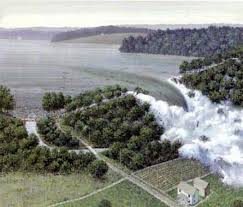 I’ve reached the 70,000 word mark of my current work-in-progress. Only 20,000 words to go and the threads are thankfully coming together as I’d hoped. It’s at this stage that I think a lot about pacing. I’m approaching the finish line. Things are coming to a head. Tension and conflict are building inexorably, like a river about to burst its banks. But how to control the ebb and flow of the floodtide? If it rages too swiftly, it might peak early and end in melodrama or anti-climax. If I dam it too much, it may lose momentum. How do you get the pacing just so?
I’ve reached the 70,000 word mark of my current work-in-progress. Only 20,000 words to go and the threads are thankfully coming together as I’d hoped. It’s at this stage that I think a lot about pacing. I’m approaching the finish line. Things are coming to a head. Tension and conflict are building inexorably, like a river about to burst its banks. But how to control the ebb and flow of the floodtide? If it rages too swiftly, it might peak early and end in melodrama or anti-climax. If I dam it too much, it may lose momentum. How do you get the pacing just so?
 Approaching the end, you want the reader to feel a real sense of urgency and desperation. If you’ve done your job well, the narrative and character arcs should be catapulting your story at a good speed towards the climax. But there are other ways to control pace that don’t involve the plot at all. Simple craft tips that are an essential part of a writer’s toolbox.
Approaching the end, you want the reader to feel a real sense of urgency and desperation. If you’ve done your job well, the narrative and character arcs should be catapulting your story at a good speed towards the climax. But there are other ways to control pace that don’t involve the plot at all. Simple craft tips that are an essential part of a writer’s toolbox.
Write short sentences, scenes and chapters. Condense dialogue and description, thereby heightening the significance of each word. Cut scenes short at vital moments to raise anxiety and suspense levels in your reader. Remember to vary your pacing though, even in these final chapters. Longer sentences and more measured prose will slow down your story. This sort of contrast is still important to allow readers to catch their breath.
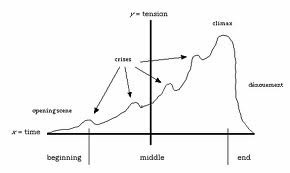 Another way to build tension is to write in slow motion. This might sound counterintuitive, but it’s a technique used all the time by film directors to increase dramatic impact. So at the crucial moment, say when a character drowns at sea, take your time. Describe the scene in close detail – the freezing bite of the waves, the taste of salt water, the horror of hopelessly holding onto that last breath. Or you might want to do the opposite. You might want to plunge your reader straight back into the action after the drowning. This is where I sometimes make an exception to the old show, don’t tell rule. Shock the reader with the brutal fact of the drowning by simply telling it in as blunt a way as possible.
Another way to build tension is to write in slow motion. This might sound counterintuitive, but it’s a technique used all the time by film directors to increase dramatic impact. So at the crucial moment, say when a character drowns at sea, take your time. Describe the scene in close detail – the freezing bite of the waves, the taste of salt water, the horror of hopelessly holding onto that last breath. Or you might want to do the opposite. You might want to plunge your reader straight back into the action after the drowning. This is where I sometimes make an exception to the old show, don’t tell rule. Shock the reader with the brutal fact of the drowning by simply telling it in as blunt a way as possible.
My last tip is to let the setting work for you. A storm at sea instantly ramps up suspense. A calm cove does the opposite. Spend some time getting the location right and it will give your writing an automatic boost. My story is rushing towards its (hopefully) dramatic conclusion. So it’s nice to know that I don’t need to rely on structure alone to control the pace. I have a few craft tricks up my sleeve as well.

June 22, 2013
Release Day For Currawong Creek & Giveaway
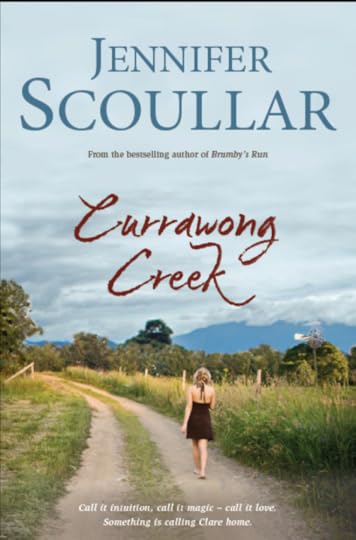 It’s that time of year again. Time to give my blog over to shameless self-promotion, for Currawong Creek will be officially released this coming Wednesday 26th June. I’m also approaching another very important milestone - 20,000 hits on my blog.
It’s that time of year again. Time to give my blog over to shameless self-promotion, for Currawong Creek will be officially released this coming Wednesday 26th June. I’m also approaching another very important milestone - 20,000 hits on my blog.
To celebrate, I’m offering two book-pack giveaways. Wasp Season, Brumby’s Run and Currawong Creek all bundled together with a ribbon around them! The launch for Currawong Creek will be held at Readings Carlton, 309 Lygon St, Melbourne. 6.00 pm for a 6.30 pm start. You are all welcome, of course! I’m very excited about this book. And not only because for the first time I get to have bestselling author on the cover! Apart from its heartfelt and turbulent romance, Currawong Creek also tackles some topics that lie quite close to my heart. The importance and challenges of foster care, equine therapy for children, and land and water conservation in Australia – looking at coal seam gas mining in particular. I hope my book can spark some interesting debate on these issues.
 A big thank you to Belinda Byrne and all the Penguin publishing team, for their generous support and faith in my work. Thanks to my lovely agent, Fran Moore of Curtis Brown Australia. And an even bigger thank you, of course, to my wonderful readers. Without you, none of this would have been possible!
A big thank you to Belinda Byrne and all the Penguin publishing team, for their generous support and faith in my work. Thanks to my lovely agent, Fran Moore of Curtis Brown Australia. And an even bigger thank you, of course, to my wonderful readers. Without you, none of this would have been possible!
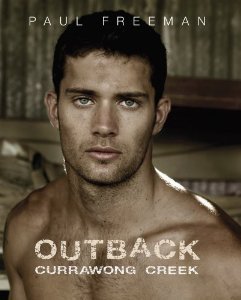 One more thing. Please don’t confuse my novel with a book of a similar title – Outback Currawong Creek, which is a stylish, coffee-table book filled with beautiful photographs of nude men. Oddly, some of them have an uncanny resemblance to the men in my book …
One more thing. Please don’t confuse my novel with a book of a similar title – Outback Currawong Creek, which is a stylish, coffee-table book filled with beautiful photographs of nude men. Oddly, some of them have an uncanny resemblance to the men in my book …
Penguin is also offering a pre-publication price promotion on my earlier novel, Brumby’s Run. The ebook version is only $4.99 across all sites. So if you haven’t read it, grab yourself a bargain! For your chance to win a three-book prize pack, please leave a comment on this post. I will announce the winners of the draw on Sunday July 14th. Good luck!
Heartfelt and passionate Australian story from the bestselling author of Brumby’s Run.
[image error]Currawong Creek is the story of Clare Mitchell, a young Brisbane lawyer who is very caught up in her career. When she becomes the unlikely carer of a little boy, a problem foster child named Jack, her ordered world is turned upside down. In desperation she takes leave of her job and goes with Jack to Currawong Creek, her grandfather’s Clydesdale stud at Merriang in the foothills of the beautiful Bunya Mountains.
Clare arrives to find part of the property leased by a local vet, Tom Lord. Tom is an advocate of equine therapy for children. Jack falls in love with Currawong’s animals, and Clare falls in love with Tom and the life of a country vet. But trouble is coming, in the form of the Pyramid mining company. Trouble that threatens to not only destroy Clare’s new-found happiness, but also the peace and beauty of the land she loves.

June 15, 2013
A Satisfying Ending
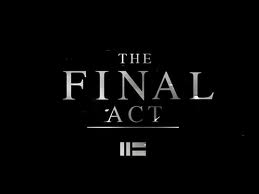 I’m sixty thousand words into my work-in-progress, two-thirds of the way through a novel which will end up being about ninety thousand words. If it was a screen play, I’d be entering the final act.
I’m sixty thousand words into my work-in-progress, two-thirds of the way through a novel which will end up being about ninety thousand words. If it was a screen play, I’d be entering the final act.
In the first third of the manuscript, the first act in screenwriting terms, the premise is set up for the reader. What sort of a story is it, and what is it about? Who is the heroine and what does she want more than anything? Who is the antagonist? In many ways the antagonist becomes the engine room of the story. Meeting this character provides the reader with an answer to the final important question. What is the main conflict going to be?
 In the middle third of the manuscript, or second act, life is becoming progressively more difficult for my heroine, Nina. This is when an author can torture her main character, in fact it’s almost mandatory! Plans fail, alliances break down, dreams are dashed. Nina’s choices become harder and harder. She has, as the ancient Greeks would say, her long, dark night of the soul. My god, is Nina ever in a bind! But she never gives up. She remains single-mindedly determined to achieve her goal, whatever the sacrifice.
In the middle third of the manuscript, or second act, life is becoming progressively more difficult for my heroine, Nina. This is when an author can torture her main character, in fact it’s almost mandatory! Plans fail, alliances break down, dreams are dashed. Nina’s choices become harder and harder. She has, as the ancient Greeks would say, her long, dark night of the soul. My god, is Nina ever in a bind! But she never gives up. She remains single-mindedly determined to achieve her goal, whatever the sacrifice.
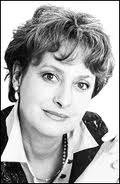
Minette Walters
I’m about to launch into my last thirty thousand words – the final act. If I don’t provide my readers with a satisfying finish to the story, I’ll have wasted my time. But I must admit that, despite doing a lot more planning this time, I don’t know exactly how the book ends. I once watched a fascinating documentary on English crime writer Minette Walters. It followed the progress of her novel The Shape Of Snakes. Half way through this complicated psychological thriller about a twenty year old murder mystery, Minette still didn’t know who had committed the crime. Quite the panster! Apparently she writes all her books like that.
“It’s like flying by wire. You embark with nothing, just a tightrope across a chasm. It’s a much more enjoyable way to write because I have to work it out along with the reader. If I don’t know who did it until half way, the reader is going to be fairly fazed as well.” M Walters
There’s a lot of truth, for me anyway, in what she says. Plotting too carefully, can kill the interest and excitement in writing the story. It becomes a chore. So I won’t worry about my ending, not just yet. I’ll just pray for a visit from the plot fairy!

June 8, 2013
Brumby’s Run Q&A
 The launch date of my new novel, Currawong Creek is fast approaching. Penguin Books (Aust) is offering a digital price promotion ahead of the new title’s release. The ebook of Brumby’s Run (usually $12.99) is available at $4.99 until the 28th June. For those who haven’t read it, today I’m posting a Penguin Q&A about Brumby’s Run for your information. Here’s the link for last week’s Currawong Creek Q&A
The launch date of my new novel, Currawong Creek is fast approaching. Penguin Books (Aust) is offering a digital price promotion ahead of the new title’s release. The ebook of Brumby’s Run (usually $12.99) is available at $4.99 until the 28th June. For those who haven’t read it, today I’m posting a Penguin Q&A about Brumby’s Run for your information. Here’s the link for last week’s Currawong Creek Q&A
Penguin Q & A with Jennifer Scoullar, author of Brumby’s Run
What is your book about?
- Brumby’s Run is a story about a young woman named Samantha. She discovers she has a twin sister, Charlie, who is critically ill. City girl Sam soon finds herself running her sister’s farm, high in the Victorian alps. This new life, Charlie’s life, intrigues her. Bit by bit she falls in love with the mountains, the brumbies and with handsome neighbour Drew Chandler, her sister’s erstwhile lover. Sam begins to wish that Charlie might never come home.
What or who inspired it?
- Originally I was inspired by the classic Banjo Paterson poem of the same name. It is one of my absolute favourites. But I was also inspired by the magnificent wild horses of the high country, and the fine work done by Australia’s various Brumby welfare associations.
What was the biggest challenge, writing it?
- My biggest challenge was finishing the novel in time to pitch to Penguin at the 2011 RWA Conference. I only just made it!
What did you want to achieve with your book?
- I wanted to share my love of Victoria’s beautiful upper Murray region, and pay tribute to the fabled wild horses of the high country. I also wanted to entertain readers with a passionate and unusual love story.
What do you hope for your book?
- I hope it may be widely read and enjoyed.
Are there any parts of it that have special personal significance to you?
- The horses are based on my own, favourite animals, past and present.
Do you have a favourite character or one you really enjoyed writing?
- I have a soft spot for Charlie, and really admire her spirit.
What do you see as the major themes in your book?
- One of the major themes in Brumby’s Run is our search for personal identity. The book also explores our relationship with animals and the environment.
What made you set it in Victoria’s high country? – I have a great love for this region, and it is where the Brumbies are.
Did the title come instantly to you or did you labour over it? – I’d always wanted to base my novel on Banjo Paterson’s classic bush poem, Brumby’s Run, so the title was a given.
To whom have you dedicated the book and why? – I’ve dedicated the book to Australia’s various Brumby welfare associations, in acknowledgement of the wonderful work they do protecting our wild horses.
Who do you think will enjoy your book?
- Anybody who enjoys passionate love stories, set in Australia’s spectacular wild places.
Do you have a special ‘spot’ for writing at home? (If so, describe it)
- I have a small office space off the lounge room (no door!), but with a noisy family, this isn’t always ideal. My favourite spot is over at the stables. Horses are good listeners, and don’t mind you reading aloud.
Do you like silence or music playing while you’re writing?
- Silence. I’m easily distracted otherwise.
When did you start writing?
- As a child I was an avid reader and loved writing stories and poems. I began my very first novel when I was eleven years old.
Did you always want to become an author?
- I did, but then I grew up, and life kind of got in the way. There was long gap before I returned to my original passion for writing.
Tell us a bit about your childhood?
- I was a horse-mad child. My family had a house in Melbourne as well as a property in the mountains. At every chance I escaped to the farm to be with my horses.
If you’ve had other jobs outside of writing, what were they?
- I graduated from Monash University with a Bachelor of Law and Jurisprudence, and worked for a while as a solicitor. I have also raised four children, with the youngest one still at school. Now that’s a job!
Describe yourself in three words? – Passionate, compassionate and curious.
What star sign are you and are you typical of it?
- I’m a Capricorn. That’s an earth sign, and I do feel a deep spiritual connection to the earth. Typically Capricorns are ambitious and serious, with a strong work ethic. I suppose that describes me. They are also supposed to be neat and tidy. That definitely doesn’t describe me!
What three things do you dislike?
- Cruelty, greed and indifference.
What three things do you like?
- My family, my animals and having the opportunity to write, in that order.
Have you a family, partner or are you single?
- As I said before, I have four wonderful children. I am divorced and do not have a partner. Maybe no real-life man can measure up to my fictional outback heroes!

June 1, 2013
Currawong Creek – First Sighting
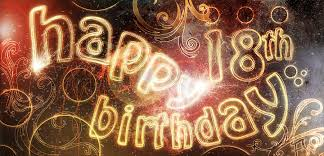 It was my youngest son’s eighteenth birthday yesterday – a cause for much celebration! I also received an advance copy of Currawong Creek. It’s always a thrill to see your imaginary story in the form of a physical book for the first time. So all in all, a great week.
It was my youngest son’s eighteenth birthday yesterday – a cause for much celebration! I also received an advance copy of Currawong Creek. It’s always a thrill to see your imaginary story in the form of a physical book for the first time. So all in all, a great week.
Today I’m posting a Penguin Q&A about Currawong Creek.
What is your new book about? - Currawong Creek is the story of Clare Mitchell, a young Brisbane lawyer who is very caught up in her career. [image error]When she takes on the care of problem foster child Jack, her ordered life is turned upside down. Her partner’s betrayal is the final straw. She takes leave of her job and takes Jack to Currawong Creek, her grandfather’s Clydesdale stud at Merriang in the foothills of the beautiful Bunya Mountains. She arrives to find part of the property leased by local vet, Tom Lord, an advocate of equine therapy for traumatised children. Jack falls in love with Currawong’s animals, and Clare falls in love with Tom and the life of a country vet. But trouble is coming, in the form of the Pyramid Mining Company. Trouble that threatens to not only destroy Clare’s new-found happiness, but the tiny town of Merriang itself.
What or who inspired it? - I love Clydesdale horses! Also, I fostered kids for fifteen years, and saw many young mothers who needed help almost as much as their children did. There’s such a desperate shortage of foster carers in our community. Often, no suitable place can be found for a child after being  taken into care. So I thought I’d explore that problem in my story. There is so much evidence to show that animals can help to heal traumatised children. I had to give little Jack that chance! The setting was inspired by Queensland’s Darling Downs, and its beautiful Bunya Mountains. A growing national concern about our land and water has led to a realisation that agricultural land and underground water are finite resources that should be protected. This is another issue explored in Currawong Creek. The characters though, are entirely fictional. I loved the idea of throwing a young, single, professional woman in the deep end with a difficult child – and a German Shepherd puppy! How would it change her? What problems would it cause? How would she cope?
taken into care. So I thought I’d explore that problem in my story. There is so much evidence to show that animals can help to heal traumatised children. I had to give little Jack that chance! The setting was inspired by Queensland’s Darling Downs, and its beautiful Bunya Mountains. A growing national concern about our land and water has led to a realisation that agricultural land and underground water are finite resources that should be protected. This is another issue explored in Currawong Creek. The characters though, are entirely fictional. I loved the idea of throwing a young, single, professional woman in the deep end with a difficult child – and a German Shepherd puppy! How would it change her? What problems would it cause? How would she cope?
What was the biggest challenge, writing it? - My biggest challenge was writing the relationship between Clare and Jack’s birth mother, Taylor. These are two women from very different worlds, yet they share a strong common bond. They both love Jack. Emotions naturally run high in that sort of a situation, and I wanted to show each of their positions with sympathy. It needed a delicate balance, and a lot of rewriting.
What did you want to achieve with your book? - I mainly wrote Currawong Creek to be an entertaining story. Along the way, it may raise awareness about the challenges and importance of fostering. It may encourage somebody to explore equine therapy as a healing tool for a child. That would be good. I also hope it may help spark debate about land and water conservation in Australia.
What do you hope for your book? - I hope my book will be widely read and enjoyed.
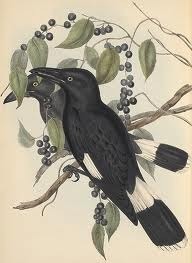 Are there any parts of it that have special personal significance to you? - Samson, the German Shepherd puppy, has particular personal resonance for me. I raised and trained German Shepherds for many years, and he is a composite of my most intelligent and charming dogs. My father also passed on to me a particular love of Clydesdale horses, and I’ve always had a soft spot for currawongs!
Are there any parts of it that have special personal significance to you? - Samson, the German Shepherd puppy, has particular personal resonance for me. I raised and trained German Shepherds for many years, and he is a composite of my most intelligent and charming dogs. My father also passed on to me a particular love of Clydesdale horses, and I’ve always had a soft spot for currawongs!
Do you have a favourite character or one you really enjoyed writing? - Harry, Clare’s grandfather, was without doubt my favourite character. Such a sweet, old man with a great deal of courage and very fine principles. I’d love to know him in real life
What do you see as the major themes in your book? - I suppose one of the main themes is finding the courage to stand up for what you believe in. Also forgiveness and an exploration of the different kinds of love - love for a child, a lover and a grandfather.
What made you set it in …..? - The Bunya Mountains? They’re a magical place, 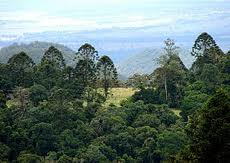 like an island, surrounded by the plains and cleared farming land of the Darling Downs. A refuge of biodiversity, harbouring ancient plants and more than thirty rare and threatened species. Iconic Bunya pines (Araucaria bidwillii) tower over tall, moist rainforests along the crest of the range. Their distinctive dome-shaped crowns rise above the canopy, as they’ve done for millions of years. It’s a truly mysterious and romantic setting.
like an island, surrounded by the plains and cleared farming land of the Darling Downs. A refuge of biodiversity, harbouring ancient plants and more than thirty rare and threatened species. Iconic Bunya pines (Araucaria bidwillii) tower over tall, moist rainforests along the crest of the range. Their distinctive dome-shaped crowns rise above the canopy, as they’ve done for millions of years. It’s a truly mysterious and romantic setting.
To whom have you dedicated the book and why? - Currawong Creek is dedicated to the Wilderness Society, as a tribute to the wonderful work they do, protecting and restoring wild places across Australia.
Who do you think will enjoy your book? - Anybody who loves kids, animals, the bush and a ripping love story.

May 26, 2013
5×15 at the Sydney Writer’s Festival
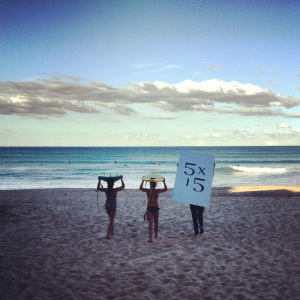 I had the great delight of attending Sydney Writer’s Festival 5×15 session on Saturday. Similar events have sold out in London, Paris and New York. It works like this. Five speakers tell stories about their ideas, passions and obsessions. Just two rules: no scripts, and only fifteen minutes apiece, in a kind of spoken word cabaret. The facilitator was my dear friend and fellow Darkling, Diana Jenkins. Diana is a freelance writer. She holds a research PhD in English from UNSW and is news editor for Varuna – the Writer’s House.
I had the great delight of attending Sydney Writer’s Festival 5×15 session on Saturday. Similar events have sold out in London, Paris and New York. It works like this. Five speakers tell stories about their ideas, passions and obsessions. Just two rules: no scripts, and only fifteen minutes apiece, in a kind of spoken word cabaret. The facilitator was my dear friend and fellow Darkling, Diana Jenkins. Diana is a freelance writer. She holds a research PhD in English from UNSW and is news editor for Varuna – the Writer’s House.
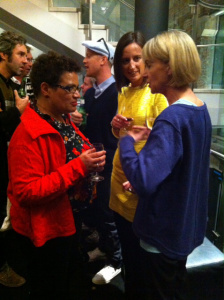
From left – Jackie Kay, Urthboy, Diana Jenkins and Kate Mosse after 5×15. Photo by Deborah Rice.
The event brought together an eclectic mix of storytellers. First was Jackie Kay, who talked about taxi rides. Jackie is a hilarious Scottish poet, novelist and short story writer. Her novel Trumpet won the Guardian Fiction Prize, and her autobiographical Red Dust Road won Book of the Year at the Scottish Book Awards. The remarkable Amelia Lester shared some fascinating stories about fact-checking. Astonishingly, Amelia was appointed managing editor of The New Yorker at the grand old age of twenty-six. Award winning musician Tim Levinson, better known as Urthboy, talked about unclean slates and new beginnings. His album The Signal was hailed as a classic by Rolling Stone. In celebration of the government’s apology to the Stolen Generations, Urthboy reimagined Paul Kelly’s From Little Things Big Things Grow. The song helped raise over $100,000 for indigenous-run health and education programs. Next came internationally bestselling author Kate Mosse, who told of her passion for girl’s own adventure stories. Kate is the co-founder and honorary director of the Orange Prize for Fiction.
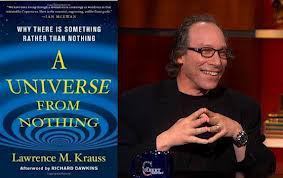 The highlight for me however, was the final storyteller. Lawrence Krauss is a renowned cosmologist, and hailed by Scientific American as a rare public intellectual. He has written nine books, including the international bestseller The Physics Of Star Trek, and more recently A Universe From Nothing. Lawrence explained how Star Trek saved the world. I won’t give too much away. Suffice to say, I’m even more of a fan of this funny, brilliant man after hearing his story. Lawrence is not just an intellectual giant, but a man of immense bravery and compassion. It was a great thrill to meet him.
The highlight for me however, was the final storyteller. Lawrence Krauss is a renowned cosmologist, and hailed by Scientific American as a rare public intellectual. He has written nine books, including the international bestseller The Physics Of Star Trek, and more recently A Universe From Nothing. Lawrence explained how Star Trek saved the world. I won’t give too much away. Suffice to say, I’m even more of a fan of this funny, brilliant man after hearing his story. Lawrence is not just an intellectual giant, but a man of immense bravery and compassion. It was a great thrill to meet him.
 The facilitator Diana Jenkins, was the informative, cohesive glue linking these disparate speakers. Her immense wit and enthusiasm added hugely to the event’s success. You did a tremendous job Di. Thank you! I look forward to many more of these sessions at future Australian literary festivals. (P.S. Here’s a link to Di’s feature on last year’s London 5×15, if you’re interested.)
The facilitator Diana Jenkins, was the informative, cohesive glue linking these disparate speakers. Her immense wit and enthusiasm added hugely to the event’s success. You did a tremendous job Di. Thank you! I look forward to many more of these sessions at future Australian literary festivals. (P.S. Here’s a link to Di’s feature on last year’s London 5×15, if you’re interested.)
Related articles
In defence of unclean slates and new beginnings (atthefestival.wordpress.com)

May 19, 2013
Historic Port Of Echuca
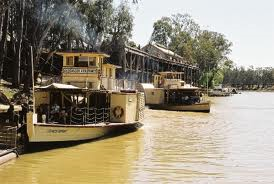 I’m up the Murray again on a research trip. This time it’s a houseboat from Echuca on the Victorian-NSW border, up to Torrumbarry Weir. Today I spent a fascinating day exploring the historic port of Echuca, Australia’s paddle steamer capital. The river precinct is an authentic working steam port, home to Australia’s largest fleet of steam-driven paddle steamers. It still operates much the same as it did in days gone by, with shipwrights and steam engineers providing a vital role in the port’s operations. Echuca holds a place in history as Australia’s busiest inland port during the late 1800′s, handling cargo from hundreds of riverboats annually. It’s still the centre of steam boat activity. Wander down the Murray Esplanade and you can almost smell the wood smoke from the old paddle steamers as they unloaded wool, timber and wheat, and took on stores, shearers and machinery for remote stations along the Murray and its tributaries.
I’m up the Murray again on a research trip. This time it’s a houseboat from Echuca on the Victorian-NSW border, up to Torrumbarry Weir. Today I spent a fascinating day exploring the historic port of Echuca, Australia’s paddle steamer capital. The river precinct is an authentic working steam port, home to Australia’s largest fleet of steam-driven paddle steamers. It still operates much the same as it did in days gone by, with shipwrights and steam engineers providing a vital role in the port’s operations. Echuca holds a place in history as Australia’s busiest inland port during the late 1800′s, handling cargo from hundreds of riverboats annually. It’s still the centre of steam boat activity. Wander down the Murray Esplanade and you can almost smell the wood smoke from the old paddle steamers as they unloaded wool, timber and wheat, and took on stores, shearers and machinery for remote stations along the Murray and its tributaries.
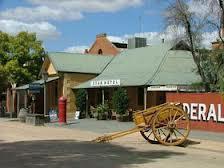 We had lunch at the Star Hotel built in 1867, and explored the underground bar and tunnel. The bar lies twelve feet underground. After being de-licensed in 1897 due to the rowdy nature of the establishment, the underground bar became a ‘sly-grog shop’. An escape tunnel led to an outside alleyway, which was used in the event of a police raid. The underground bar and tunnel was only rediscovered in 1973. Previous owners had lived there for forty years, unaware of its existence.
We had lunch at the Star Hotel built in 1867, and explored the underground bar and tunnel. The bar lies twelve feet underground. After being de-licensed in 1897 due to the rowdy nature of the establishment, the underground bar became a ‘sly-grog shop’. An escape tunnel led to an outside alleyway, which was used in the event of a police raid. The underground bar and tunnel was only rediscovered in 1973. Previous owners had lived there for forty years, unaware of its existence.
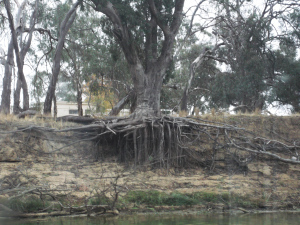 Unfortunately, my trip up this part of the Murray only confirms what I’ve found in other places. Too many people wanting a piece of this majestic river. Giant river red gums losing their grip on degraded banks. Old jetties jutting out twenty meters above the current river level. The health of the Murray-Darling Basin is failing. Ecosystems which
Unfortunately, my trip up this part of the Murray only confirms what I’ve found in other places. Too many people wanting a piece of this majestic river. Giant river red gums losing their grip on degraded banks. Old jetties jutting out twenty meters above the current river level. The health of the Murray-Darling Basin is failing. Ecosystems which  rely on the water flowing through the Basin’s rivers and tributaries are under great pressure, due to unsustainable extraction levels for irrigation and other uses. This problem is likely to become worse as water availability declines, due to climate change. We must act now, to restore the balance. Our children won’t forgive us if we don’t.
rely on the water flowing through the Basin’s rivers and tributaries are under great pressure, due to unsustainable extraction levels for irrigation and other uses. This problem is likely to become worse as water availability declines, due to climate change. We must act now, to restore the balance. Our children won’t forgive us if we don’t.

May 11, 2013
Wombats In Trouble
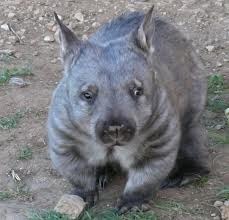 Last week, on a late night bus trip outside the Murraylands town of Mannum, I was thrilled to see several Southern Hairy-Nosed Wombats. Here at Pilyara, Common Wombats are thankfully just that – common. But I’d never seen their much rarer western cousins. Southern Hairy-Nosed Wombats (Lasiorhinus latifrons) are one of three species (The Northern Hairy-Nosed being the rarest, and close to extinction). They’re found in scattered areas of semiarid scrub and mallee from the eastern Nullarbor Plain to the New South Wales border. They are the faunal emblem of South Australia, and the smallest of all three wombat species.
Last week, on a late night bus trip outside the Murraylands town of Mannum, I was thrilled to see several Southern Hairy-Nosed Wombats. Here at Pilyara, Common Wombats are thankfully just that – common. But I’d never seen their much rarer western cousins. Southern Hairy-Nosed Wombats (Lasiorhinus latifrons) are one of three species (The Northern Hairy-Nosed being the rarest, and close to extinction). They’re found in scattered areas of semiarid scrub and mallee from the eastern Nullarbor Plain to the New South Wales border. They are the faunal emblem of South Australia, and the smallest of all three wombat species.
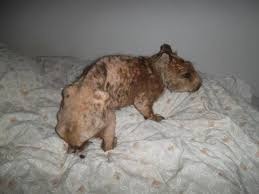 Currently, Southern Hairy-Nosed wombats are being affected by an unidentified disease outbreak. The most obvious symptoms are hair loss and emaciation. Internally the wombats are anaemic, and in some cases there is liver damage and heart disease. In many parts of their habitat, very few native grasses remain. Instead, the habitat is dominated by onion weed, horehound, and potato weed. It’s suspected that more frequent droughts and an increase in toxic weeds is causing many animals to starve to death.
Currently, Southern Hairy-Nosed wombats are being affected by an unidentified disease outbreak. The most obvious symptoms are hair loss and emaciation. Internally the wombats are anaemic, and in some cases there is liver damage and heart disease. In many parts of their habitat, very few native grasses remain. Instead, the habitat is dominated by onion weed, horehound, and potato weed. It’s suspected that more frequent droughts and an increase in toxic weeds is causing many animals to starve to death.
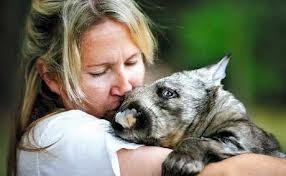
Brigitte Stevens drove 25 hours to rescue Twinky. Photo Darryn Smitha
Wombats are an Aussie icon, but few people realise all the perils these gorgeous animals face: drought, floods, climate change, loss of habitat, disease, cars and culling – both legal and illegal. It’s not rocket science to see these animals are in trouble but thanks to the Wombat Awareness Organisation (WAO), there is hope!
 WAO is a wonderful charity established to help save the Southern Hairy-Nosed Wombat from extinction. Until WAO began in 2007, injured or distressed wombats were ignored or shot. Now WAO’s rescue service is available to every wombat in South Australia. Their rehabilitation centre is the largest wombat facility in the world, with the world’s largest free range wombat enclosure spreading over eleven acres. Wombats are nursed back to health and released into the wild if possible. Those requiring long term care can stay, digging burrows and sleeping in temperature controlled beds, in lush surrounds with ample native food in a supported environment. Donate to help the wombats here!
WAO is a wonderful charity established to help save the Southern Hairy-Nosed Wombat from extinction. Until WAO began in 2007, injured or distressed wombats were ignored or shot. Now WAO’s rescue service is available to every wombat in South Australia. Their rehabilitation centre is the largest wombat facility in the world, with the world’s largest free range wombat enclosure spreading over eleven acres. Wombats are nursed back to health and released into the wild if possible. Those requiring long term care can stay, digging burrows and sleeping in temperature controlled beds, in lush surrounds with ample native food in a supported environment. Donate to help the wombats here!
PS I’m heading off again tomorrow on another research trip up the Murray. This time, it’s a week on a houseboat, leaving from the historic port town of Echuca.


